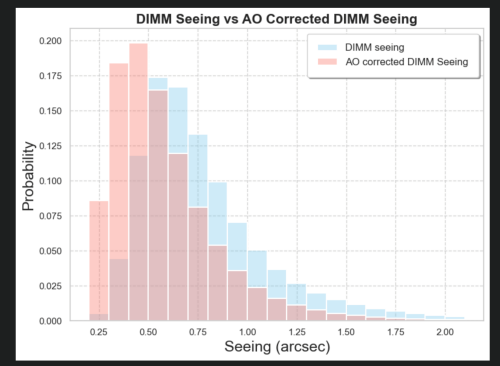Thanks to a highly successful suite of instruments, the demand on usage of one of VLT Unit Telescope (UT4) has remained high in recent years. ESO has taken several actions to alleviate the situation, including the second generation deformable secondary mirror Phase A study. In parallel, a careful monitoring of operations at the telescope indicates that a large fraction of the telescope time observing with MUSE is spent with MUSE Wide Field Mode without Adaptive Optics, (NOAO). While the NOAO mode is essential for programmes gathering information over the 582-597 nm wavelength which is otherwise blocked by the Na Notch filter, the benefits of AO are many-fold. Not only the operations at the telescope are routine, but importantly seeing is improved in any observing conditions (bad seeing, light cirrus, high wind speed) while proven to be more stable during long exposure times.
Astronomers are Encouraged to Use Adaptive Optics in MUSE Wide Field Mode

This is illustrated by the figure above, which indicates that the AO mode profile not only peaks at lower seeing but also displays a reduced right-hand tail. In case no Natural Guide Star is available, the so-called Tip-Tilt free mode uses the telescope field stabilisation still providing a significant improvement on image quality. As a result, shorter exposure times are required in AO mode to reach equivalent image quality. In summary, the community is reminded that MUSE WFM-AO mode is more efficient than the MUSE WFM-NOAO and suitable for most science cases. For all these reasons, astronomers are encouraged to use the MUSE Wide Field Mode with Adaptive Optics for their observations. Do not hesitate to contact the User Support Department with any questions on this topic.
